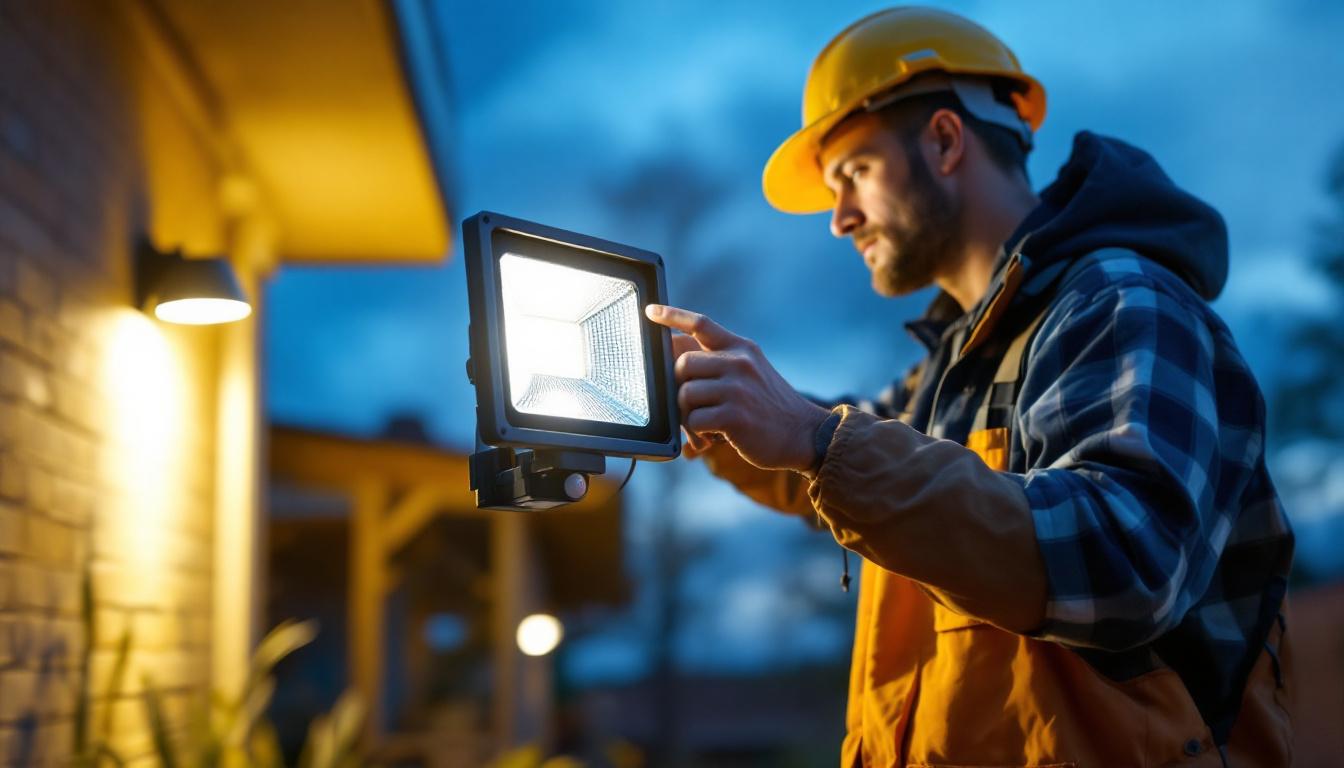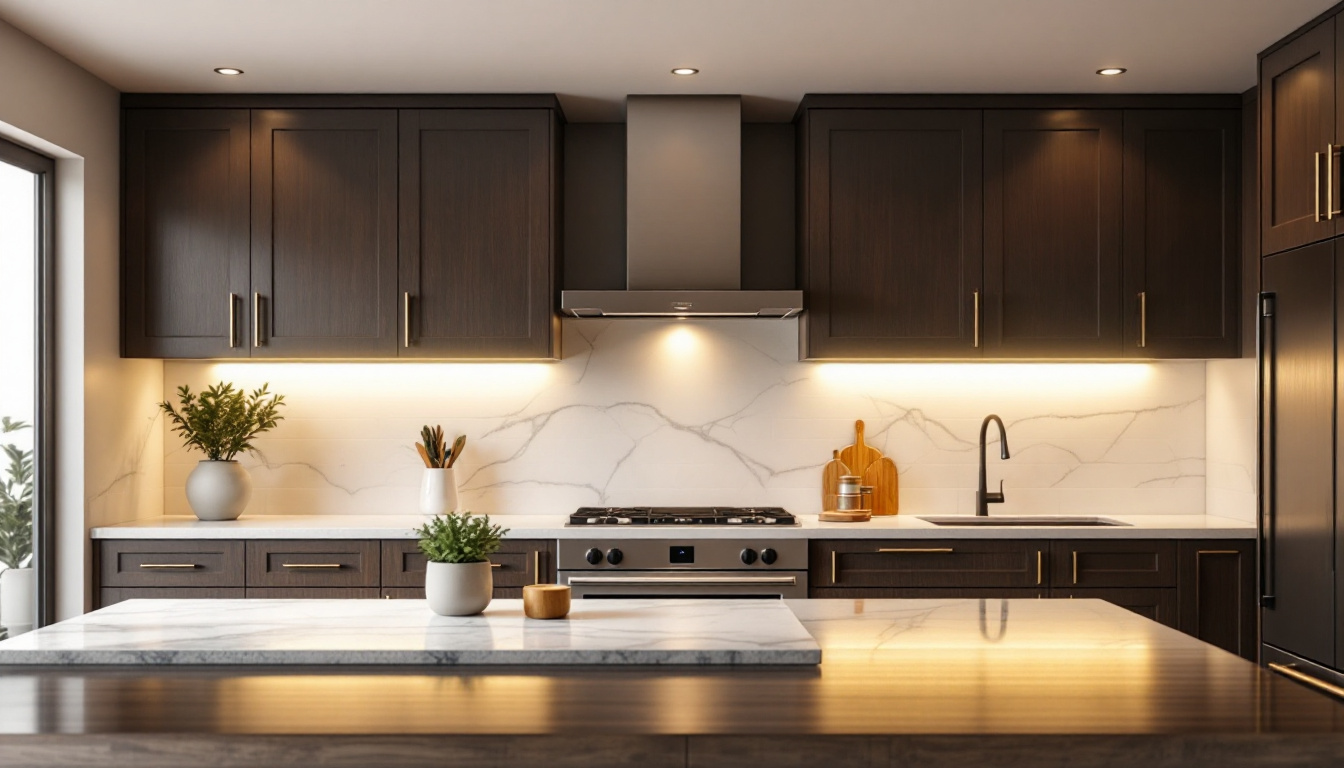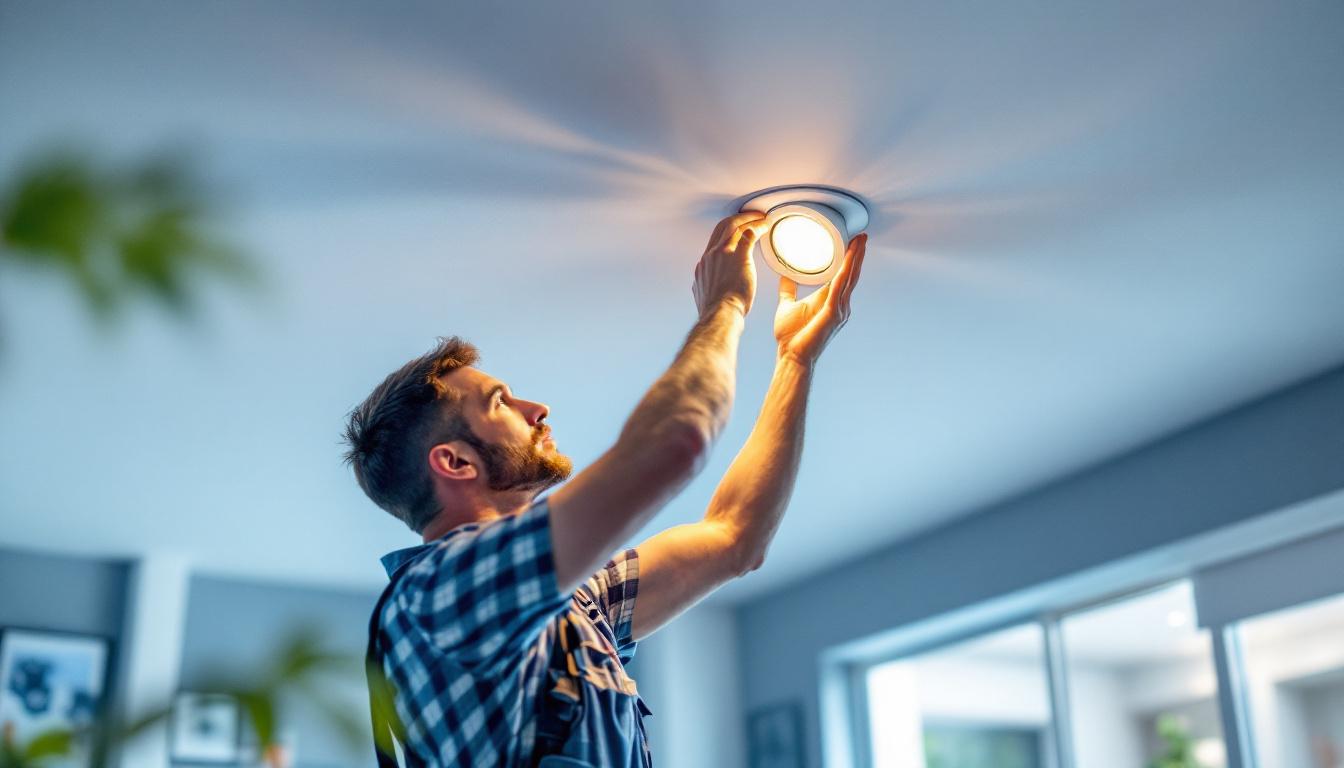
In the ever-evolving world of outdoor lighting, sensor floodlights have emerged as a game-changer for both residential and commercial applications. For lighting contractors, understanding the intricacies of these devices is essential to meet client demands and enhance project efficiency. This guide delves into the various aspects of sensor floodlights, providing valuable insights that can elevate your expertise and service offerings.
Sensor floodlights are powerful lighting fixtures equipped with motion detection technology. They automatically turn on when they detect movement within a specified range, providing both illumination and security. This functionality not only enhances safety but also promotes energy efficiency, as the lights only operate when needed. In addition to their practical benefits, sensor floodlights can also serve aesthetic purposes, illuminating pathways, gardens, and architectural features, creating a welcoming atmosphere while deterring potential intruders.
There are several types of sensor floodlights available on the market, each designed to cater to different needs and environments. The most common types include:
When selecting sensor floodlights for a project, several key features should be taken into consideration:
Another important aspect to consider is the power source of the sensor floodlights. Some models are hardwired into the electrical system, providing a constant power supply, while others may be solar-powered, offering an eco-friendly alternative that reduces electricity costs. Solar-powered floodlights are particularly advantageous in remote locations where electrical access is limited, allowing for easy installation and maintenance. Additionally, many modern sensor floodlights come equipped with LED technology, which not only extends the lifespan of the bulbs but also significantly reduces energy consumption compared to traditional incandescent options.
Lastly, the design and durability of the floodlights should not be overlooked. Many sensor floodlights are built to withstand various weather conditions, featuring weatherproof casings and corrosion-resistant materials. This ensures longevity and reliable performance, even in harsh environments. When selecting floodlights, it’s essential to consider the aesthetic appeal as well, as these fixtures can complement the overall design of a property while providing essential safety features.
Incorporating sensor floodlights into lighting projects offers numerous advantages that can be highlighted to clients. These benefits extend beyond mere illumination, impacting safety, energy savings, and convenience.
One of the primary reasons for installing sensor floodlights is to enhance security. The sudden illumination of an area can deter potential intruders, making properties less attractive targets for theft or vandalism. This feature is particularly appealing to homeowners and business owners who prioritize safety. Furthermore, the presence of sensor floodlights can provide peace of mind, allowing individuals to navigate their properties safely at night. Many models also come equipped with motion detection technology, which can alert homeowners to any movement in the vicinity, further enhancing the security measures in place.
Sensor floodlights contribute to energy savings by operating only when necessary. This functionality reduces electricity consumption, leading to lower utility bills. For environmentally conscious clients, promoting energy-efficient solutions can be a significant selling point. Additionally, many sensor floodlights utilize LED technology, which not only lasts longer than traditional bulbs but also emits less heat, reducing the risk of fire hazards. This combination of longevity and efficiency makes sensor floodlights an excellent investment for both residential and commercial properties, allowing clients to enjoy bright, reliable lighting without the guilt of excessive energy use.
With the ability to automatically turn on and off, sensor floodlights offer unparalleled convenience. Homeowners can enjoy well-lit pathways and driveways without the need for manual switches. Additionally, some models can be integrated with smart home systems, allowing for remote control and monitoring. This level of automation means that users can adjust settings or check the status of their floodlights from anywhere, using their smartphones or tablets. Moreover, many sensor floodlights come with customizable settings, such as sensitivity adjustments and timer functions, enabling users to tailor their lighting experience to fit their specific needs and preferences, ensuring optimal performance and satisfaction.
Proper installation is crucial for maximizing the effectiveness of sensor floodlights. Lighting contractors must pay attention to several factors to ensure optimal performance.
The placement of sensor floodlights significantly impacts their functionality. It is essential to position the lights where they can effectively detect movement while minimizing obstructions. Common installation areas include:
Sensor floodlights typically require a dedicated power source. Contractors should ensure that the wiring is adequate to support the floodlight’s power requirements. Additionally, using weather-resistant connectors and enclosures is crucial for outdoor installations to prevent moisture damage.
After installation, it is essential to test and calibrate the sensor floodlights. Adjusting the sensitivity and time delay settings can optimize performance based on the specific environment. Conducting thorough tests ensures that the lights respond appropriately to movement without unnecessary triggers.
Regular maintenance is vital for keeping sensor floodlights in optimal working condition. Lighting contractors should advise clients on best practices to ensure longevity and performance.
Dust, dirt, and debris can accumulate on sensor floodlights, affecting their performance. Regular cleaning of the sensor lens and light fixture is essential. Additionally, conducting periodic inspections can help identify any potential issues, such as damaged wiring or malfunctioning sensors.
As technology advances, older models of sensor floodlights may become less efficient or outdated. Contractors should stay informed about the latest innovations and recommend upgrades to clients when necessary. This proactive approach can enhance client satisfaction and improve overall system performance.
When recommending sensor floodlights to clients, it is essential to consider their specific needs and preferences. Each client may have different requirements based on their property type, usage, and budget.
The intended use of the sensor floodlight plays a significant role in the selection process. Residential clients may prioritize aesthetics and ease of use, while commercial clients might focus on durability and advanced features. Understanding these distinctions can help contractors make informed recommendations.
Clients often have varying budget constraints. It is important to present options that align with their financial expectations while still meeting quality standards. Offering a range of products can help clients make informed decisions without compromising on performance.
While sensor floodlights offer numerous benefits, they can also present challenges. Being aware of these potential issues allows contractors to provide effective solutions to clients.
One of the most common challenges with sensor floodlights is false triggers caused by environmental factors such as wind, rain, or passing animals. To mitigate this issue, contractors can recommend models with adjustable sensitivity settings, allowing clients to fine-tune the sensor’s responsiveness.
In some cases, the detection range may not cover the desired area. Contractors can address this by suggesting the installation of multiple floodlights strategically positioned to ensure comprehensive coverage. Additionally, selecting models with extended detection ranges can also be beneficial.
The lighting industry is continuously evolving, with new technologies emerging to enhance the functionality of sensor floodlights. Staying informed about these trends can help contractors offer cutting-edge solutions to clients.
As smart home technology becomes increasingly popular, sensor floodlights are being designed to integrate seamlessly with home automation systems. This integration allows users to control their lighting through mobile apps or voice commands, providing enhanced convenience and customization.
Future sensor floodlights may incorporate energy management systems that monitor energy consumption in real-time. These systems can provide valuable insights to users, helping them optimize their energy usage and reduce costs.
Sensor floodlights represent a significant advancement in outdoor lighting technology, offering numerous benefits for both residential and commercial applications. For lighting contractors, understanding the various types, features, and installation considerations is essential for delivering high-quality solutions to clients. By staying informed about industry trends and best practices, contractors can enhance their service offerings and ensure client satisfaction.
As the demand for energy-efficient and automated lighting solutions continues to rise, sensor floodlights will play a pivotal role in shaping the future of outdoor illumination. Embracing this technology not only benefits clients but also positions contractors as knowledgeable professionals in a competitive market.
Ready to elevate your lighting projects with the latest sensor floodlight technology? Look no further than LumenWholesale for an unbeatable combination of quality, affordability, and convenience. Our spec-grade lighting products meet the highest industry standards, ensuring you deliver top-notch, reliable lighting solutions to your clients. Say goodbye to inflated markups and hello to superior lighting at wholesale prices. Plus, with free shipping on bulk orders, you can stock up on the best lighting products without worrying about hidden fees. Don’t compromise on quality or value—choose LumenWholesale for all your lighting needs. Wholesale Lighting at the Best Value is just a click away.

Discover the pitfalls to avoid when installing recessed kitchen lighting.

Explore how the choice of bathroom vanity lighting can significantly impact lighting contractors’ profitability.

Discover essential insights and expert tips for lighting contractors on selecting and installing LED 3-inch recessed lights.

Discover innovative tips and tricks for smart lighting contractors in this insightful guide.